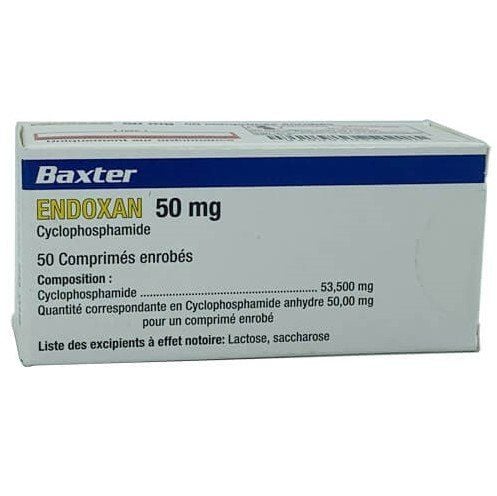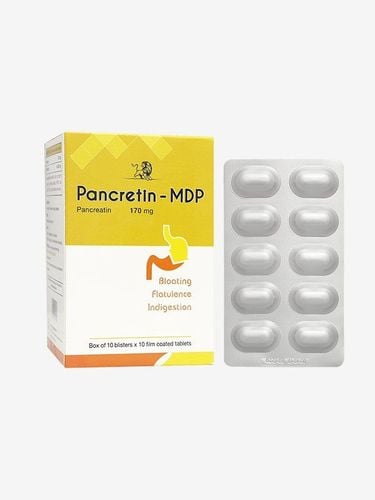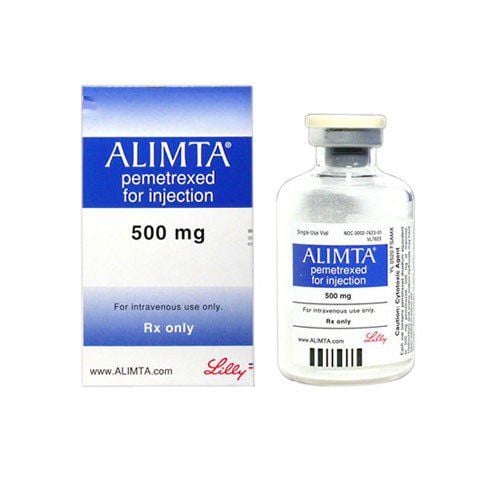This is an automatically translated article.
Sungemtaz drug has the main ingredient is Gemcitabine, which is commonly used in the treatment of cancer diseases such as bladder, prostate, ovarian cancer... Find out general information about ingredients, indications , contraindications, usage, dosage and side effects of Sungemtaz will help patients and their loved ones improve the effectiveness of treatment.
1. What is Sungemtaz?
Sungemtaz drug is prepared in the form of lyophilized powder for injection with two different concentrations, Sungemtaz 200mg and Sungemtaz 1g, with main ingredients including:
Active ingredients: Gemcitabine (in the form of Gemcitabine Hydrocholoride) Excipients: Sodium Acetate, Sodium Hydroxide, Mannitol, Hydrochloric acid. Gemcitabine Hydrocholoride has a cytostatic effect at a specific stage, it first kills cells in the DNA synthesis phase (S phase) of the mitotic cycle and also inhibits cell growth. at the G1/S boundary stage. Gemcitabine is metabolized intracellularly by the enzyme nucleotide kinase to the active metabolites nucleoside diphosphate (dFdCDP) and triphosphate (dFdCTP). The cytotoxic effect of Gemcitabine is due to the combined action of the nucleosides dFdCDP and dFdCTP leading to inhibition of DNA synthesis. First, Gemcitabine diphosphate inhibits ribonucleotide reductase, the enzyme responsible for catalyzing the reaction that produces deoxynucleoside triphosphate for DNA synthesis. Inhibition of this enzyme by diphosphate 7 nucleoside reduces the concentration of deoxynucleotides, including dCTP. Gemcitabine triphosphate then competes with dCTP for binding to DNA. Decreased intracellular concentrations of dCTP (due to the action of diphosphate) facilitate the binding of gemcitabine triphosphate to DNA. After Gemcitabine nucleotide binds to DNA, only one more strand of nucleotide is attached to the growing DNA strand. After the addition of this nucleotide, DNA synthesis is completely inhibited. DNA polymerase epsilon is unable to remove Gemcitabin nucleotides and repair the DNA strand being synthesized. In T lymphocytes, gemcitabine stimulates internuclear DNA segmentation, one of the hallmarks of programmed cell death.
2. What does Sungemtaz do?
Sungemtaz is indicated for treatment in the following cases:
In combination with Cisplatin in the treatment of locally advanced or metastatic bladder cancer. Locally advanced or metastatic pancreatic cancer. In combination with Cisplatin in the treatment of locally advanced or metastatic non-small cell lung cancer (NSCLC). Sungemtaz alone is considered in elderly patients or those with stage II cancer. Locally advanced or metastatic ovarian cancer. In combination with in the treatment of ovarian cancer that has recurred for at least 6 months after using platinum-based therapy. In combination with paclitaxel in the treatment of breast cancer that cannot be removed by surgery, locally recurrent or metastatic breast cancer that has failed with previous adjuvant chemotherapy. However, in the following cases, the drug Sungemtaz is not allowed to be indicated:
Hypersensitivity to any component of the drug Sungemtaz. History of allergy to other drugs containing the active ingredient Gemcitabine Hydrocholoride. Pregnant or lactating women.
3. Dosage and how to use Sungemtaz
3.1. Dosage in adults Non-small cell lung cancer
Monotherapy dose : Intravenous infusion at a dose of 1000 mg/m2 skin over 30 minutes x 1 time/week for 3 weeks then stop for 1 week (4 week cycle). ). Combination dose: Intravenous infusion at a dose of 1000 mg/m2 skin over 30 minutes on days 1, 8 and 15 of each 4-week (28-day) treatment cycle – 4-week regimen or 1250 mg/m2 skin for 30 minutes on days 1, 8 of each treatment cycle for 3 weeks (21 days) – 3 week regimen. Combined with Cisplatin intravenous infusion at a dose of 75-100 mg/m2 skin, once every 3 weeks. Dose adjustment: Granulocyte count (x 106/L) ≥ 1000 and platelet count (x 106/L) ≥ 100,000 : Use 100% of the normal dose. Granulocyte count (x 106/L) 500 - 999 and platelet count (x 106/L) ≥ 50,000 - 99,999: Use 75% of the normal dose. Granulocyte count (x 106/L) < 500 and platelet count (x 106/L) < 50,000 : Discontinue treatment. Pancreatic cancer: Intravenous infusion at a dose of 1000 mg/m2 of skin for 30 minutes x 1 time / week, then stopped for 1 week. The next course of treatment is infusion at a dose of 1000 mg/m2 skin x 1 time / week for 3 weeks, then stop for 1 week, repeat 4 cycles.
Bladder cancer
Dose: Intravenous infusion at a dose of 1000 mg/m2 of skin on days 1, 8 and 15 of each 4-week (28-day) treatment cycle. Co-administered with cisplatin intravenous infusion at a dose of 70 mg/m2 skin on day 1 or day 2 of each 4-week (28-day) cycle. Or put Sungemtaz 2000 mg into the bladder (after being mixed in 100 ml of physiological saline), keep the drug for 1 hour; Apply 2 times per week for 3 weeks. Repeat every 4 weeks. Take the drug for at least 2 such cycles. Breast cancer
Combination dose: Paclitaxel intravenous infusion at a dose of 125 mg/m2 skin on day 1 for 3 hours. Thereafter, Sungemtaz at a dose of 1250 mg/m2 of skin was infused intravenously over 30 minutes on days 1, 8, and 15 of each 3-week (21-day) treatment cycle. Dose adjustment: Granulocyte count (x 106/L) ≥ 1200 and platelet count (x 106/L) ≥ 75,000 : Use 100% of the normal dose. Granulocyte count (x 106/L) 100 - 1199 and platelet count (x 106/L) ≥ 50,000 - 75,000: Use 75% of the normal dose. Granulocyte count (x 106/L) 700 - 999 and platelet count (x 106/L) > 50,000 : Use 50% of the normal dose. Granulocyte count (x 106/L) < 700 and platelet count (x 106/L) < 50,000 : Stop treatment for ovarian cancer
Combination dose: Intravenous infusion at a dose of 1000 mg/m2 of skin in 30 minutes on days 1 and 8 of each 3-week (21-day) treatment cycle. Combine Carboplatin infusion on day 1 after completion of Sungemtaz infusion. Dose adjustment: Granulocyte count (x 106/L) ≥ 1500 and platelet count (x 106/L) ≥ 100,000 : Use 100% of the normal dose. Granulocyte count (x 106/L) 1000 - 1499 and platelet count (x 106/L) ≥ 75,000 - 99,999 : Use 75% of the normal dose. Granulocyte count (x 106/L) < 1000 and platelet count (x 106/L) < 75,000 : Discontinue treatment. Cholangiocarcinoma: Combined dose, intravenous infusion at a dose of 1000 mg/m2 skin over 30 minutes on days 1, 8 of each 3-week (21-day) treatment cycle. Combined with Cisplatin intravenous infusion at a dose of 25 mg/m2 skin over 1 hour on days 1 and 8 before Sungemtaz infusion.
3.2. How to use Mix Sungemtaz with 0.9% NaCl solution to achieve a concentration of 38 mg/ml in solution (maximum concentration 40 mg/ml). With the 200mg Sungemtaz vial: add 5 ml of 0.9% NaCl solution, the total volume after reconstitution is 5.26 ml. With a 1g vial of Sungemtaz added to 25 ml of 0.9% NaCl, the total volume after reconstitution is 26.3 ml with a vial containing 1 g. Shake vigorously so that the drug is completely dissolved with the diluent. Then dilute again with 0.9% NaCl to reach a concentration of 0.1 mg/ml. Do not dissolve the drug with solvents other than 0.9% NaCl. Do not mix the medicine with any other medicine. Must wear protective equipment such as blouse, mask, gloves, glasses when mixing Sungemtaz in a closed room with pressure check. If Sungemtaz gets into eyes or skin, wash immediately with plenty of water. Do not use when Sungemtaz is precipitated and discolored. If the drug is not used, the vial, syringe, line... must be destroyed according to the correct procedure. Sungemtaz is only used once a week, each time infusion for 30 minutes, the maximum can be up to 60 minutes.
4. Side effects encountered when using Sungemtaz
Using Sungemtaz with high doses, continuously or for a long time, side effects may occur such as:
Common: Systemic symptoms such as peripheral edema, headache, fever, somnolence, rash, itching, hair loss, nausea/vomiting, constipation or diarrhea, stomatitis. Hematologic abnormalities such as anemia, neutropenia, leukopenia, thrombocytopenia, bleeding, increased alkaline phosphatase, increased creatinine, proteinuria, increased blood urea nitrogen, hematuria. Other manifestations include dyspnea, flu-like syndrome, injection site irritation, dysesthesia, bronchospasm. Uncommon: Systemic symptoms such as sweating, fatigue, headache, insomnia, anorexia, sepsis, skin rash. Blood biochemistry such as hemolytic uremic syndrome, hepatotoxic reactions, liver failure, increased GGT. Cardiovascular signs such as myocardial infarction, peripheral vasculitis, supraventricular arrhythmias, hypertension, arrhythmias, congestive heart failure. Respiratory symptoms such as rhinitis, interstitial pneumonia, cough, acute respiratory distress syndrome, pulmonary edema. Other signs such as post-irradiation inflammatory syndrome, renal failure, tissue inflammation, cerebrovascular accident, tremor, subcutaneous hemorrhage. Rare: Skin manifestations such as scabs, skin blisters, toxic epidermal necrolysis. Other signs include anaphylaxis, reversible encephalopathy syndrome, capillary leak syndrome, thrombocytosis, microvascular thrombosis, ischemic colitis. Should stop the drug when detecting the above side effects or other unusual symptoms after taking Sungemtaz, and promptly notify the medical staff for timely treatment.
5. Note the use of Sungemtaz in the subjects
Use caution when using Sungemtaz in patients with severe renal impairment, elderly people. Patients being treated with Sungemtaz should be closely monitored by a physician experienced in the use of cancer chemotherapy drugs. Patients treated with Sungemtaz should have a complete blood count, including differential blood count, and platelet count before each dose. Discontinue or change the dose and duration of treatment when bone marrow depression is detected. It is recommended that biochemical indicators of liver and kidney function be assessed prior to initiation of therapy and periodically thereafter. Electrolyte monitoring including Potassium, Magnesium, and Calcium should be performed when Sungemtaz is combined with Cisplatin therapy. Drivers or machine operators often experience side effects such as fatigue, headache, insomnia...
6. Sungemtaz drug interactions:
Interactions with other drugs
Gemcitabine hydrochloride in Sungemtaz is physically incompatible with drugs such as Aciclovir, Cefotaxime, Piperacillin, Piperacillin with Tazobactam, Amphotericin B, Cefoperazone, Furosemide, Ganciclovir, Irinotecan, Methotrexate, Imipenem with Cethylprestatin Natri, , Mezlocillin, Mitomycin, Prochlorperazine edisilate. Combining Sungemtaz and Bleomycin may increase the risk or severity of side effects. Sungemtaz increases the therapeutic effect of Dicoumarol, Phenindione, Warfarin, Phenprocoumon, Acenocoumarol, 4-hydroxycoumarin, Coumarin, Ethyl biscoumacetate. Sungemtaz increases the concentration and effect of Fluorouracil, Bleomycin, Natalizumab, (live) vaccines. Sungemtaz reduces the concentration and effect of vitamin K antagonists, vaccines (inactivated). Above is necessary information about the composition, uses, dosage, usage and unwanted effects of Sungemtaz medicine. The treatment with Sungemtaz drug should be prescribed and monitored by an oncologist.
Please dial HOTLINE for more information or register for an appointment HERE. Download MyVinmec app to make appointments faster and to manage your bookings easily.













